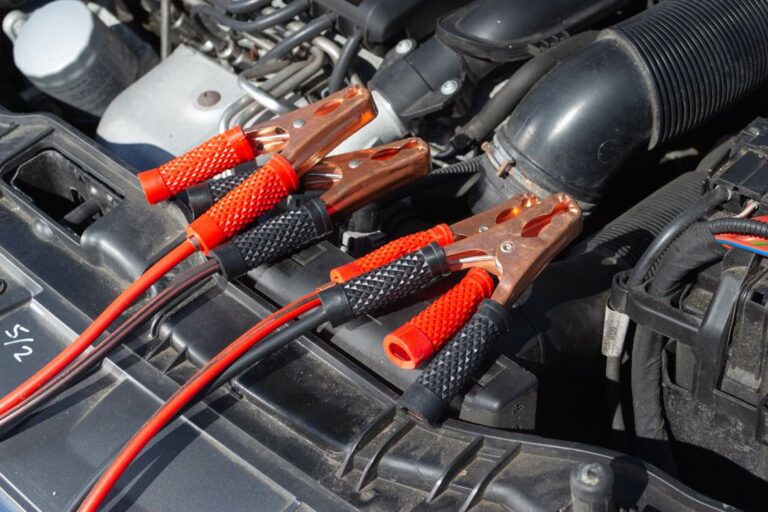What Are Car Batteries?
You may be wondering what all the fuss is about car batteries. The truth is, the recognition is well-deserved. The car battery is the powerhouse of the vehicle.
Handling issues about your car batteries can be quite a hassle; this is even more if you don’t have a tech background. Regardless of your fluency in everything vehicular, you always want your car to be in ‘top rev’.
Wondering what your favorite auto repairers want you to know about your batteries?
Your burning questions are answered right here!
Some Basics about car batteries
What is the voltage of a car battery?
Most car batteries have a voltage of 12V. This will vary depending on the condition of your car battery.
At running capacity, the voltmeter should show a reading of 13.7-14.7volts.

How many amps is a car battery?
As per current regulations, this is usually an average of 48 amps.
How often do you have to change a car battery?
Batteries don’t last a lifetime. You’ll get to the point where you’d have to make a replacement. This will depend on a lot of factors.
The fact that modern-day batteries can function until the very last minute made it harder to tell.
Car batteries usually last an average of 3-5 years.
What drains a car battery?
Batteries don’t last forever. However, some factors may deplete your battery faster than usual. Some of these you can change; others, not so much.
Here are just a few things that can affect the health of your car battery.
- Temperature extremes
You can relate to the grumpiness of batteries on a cold morning. Many vehicles struggle to perform in very cold weather.
The hotter the better? Not exactly. The middle ground is safest in this case.
- How many electrical components you make use of.
- The state of other parts such as the alternator.
- Average time spent on the road.
HOW TO MAKE YOUR BATTERY LAST LONGER
Car batteries are expensive. The cost will depend on a few different considerations. On average, $50 to $120, though you may pay up to $200 for some types of car battery.
Here are a few things you can do to increase your battery’s lifespan.
- Keep your garage warm. Keep out the cold.
- Be sure that that there are no loose bolts or cables. Every component should have a snug fit.
- Make sure the connections are clean. Clean batteries function better.
- Regular battery checks are a great idea. You may wish to sync this with your regular maintenance, so you don’t miss it. You may keep a small notepad handy for dates and readings.
- Cut down the use of the electronics while the car is stationary. Even if this means a little less music.
- Don’t neglect your alternators.
- Do well to find reputable and trustworthy repairers. This is to prevent unnecessary expenditure.
- Be sure that the accurate Cold Cranking Amps (CCA) number is keyed in or your fit battery may fail the check.
How to test a car battery
Here are some trusted ways to tell if your car battery is in bad shape.
Using a multimeter
- Connect your battery to a multimeter placed at 20 volts DC.
Read off the resting value. If your battery has fewer than 12.5volts, it’ll need charging.
- For the cranking test, connect as above.
Next, get someone to crank the engine for you. If it reads less than 9.6 volts, there’s an issue with the battery.
The headlight test
If revving your engine makes the light shine brighter, then there’s an issue somewhere.

How can you tell if your battery is bad?
You’ll most often be able to pick the unusual signals.
Listen to your vehicle. We mean this literally and figuratively.
As with everything else, attention to detail is important.
- Watch out for that awkward rev or the unusual creak.
- Difficulty starting when it’s cold.
- Uncooperative engine, often requiring jumpstarts.
- Dim or inconsistent headlights.
- Electrical issues – lights won’t come on, horn won’t honk, etc.
- Warnings on your favorite juice pack or milk carton may advise you to discard if the pack is puffy or leaky. This applies to your car batteries, too. Swollen batteries are at risk of exploding.
How to Charge a Car Battery
Charging your battery at home can be a confusing process. You need the right mix of accurate information, precautions, and tools to get this right.
A trip to your local hardware store will come in handy, too.

What you must know
- Styles of detachment and duration of charge will depend on the kind of car, manufacturer, or the age of the car battery.
- Be sure you know what goes where.
- The negative terminal often comes in black. The positive terminal comes in red.
- Be careful. You should take all the necessary precautions to protect yourself against hazardous materials like battery acid and electrical currents.
- If you are not quite sure, contact your mechanic.
- Don’t forget to look at the manufacturer’s instructions.
Getting ready
- Be clear on the procedure.
- Check the kind of battery – detachable or fixed, new or old generation? (Modern batteries don’t need to have their acid levels checked).
- Assemble all the tools and materials and keep within reach. These include a good charger, handheld voltmeter, pliers, gloves, goggles, a face mask, cleaning solution, distilled water, etc.
The process
- Turn off all the electronics.
- Beginning with the negative cable, detach the two cables one after another.
- Using a solution of baking soda and water, clean the battery terminals as required. Remove any build-up of dust, powdery substances, or grime.
- Add more pure water to top up if need be.
- The charger should be off at this point.
- Make a connection between your car battery and the charger. Connect (+) to (+) and (-) to (-).
- Don’t stack the charger on top of the battery. Keep it on a flat surface.
- Put the charger at the lowest charge rate.
- Turn on the battery charger and use the timer.
- Bear in mind that a slow charge is much better if your battery has been drained for a long time.
- When the charge is complete, detach the battery – To do this, reverse the process by beginning with the (+) and then the (-) cables.
Precautions
- The acid may be great for your batteries, but it is a disaster for your eyes and skin. Wear gloves and a pair of safety goggles. Other than skin contact, you are at risk of inhaling acid fumes. Wear a face mask.
- Appropriate clothing: Don’t let your hair, belts, or ties dangle.
- Wash your hands thoroughly before attempting to touch your face.
- In case of contact with a corrosive, flush the area with plenty of warm water for 20-30 minutes and seek immediate medical help.
How long does it take to charge a car battery?
Moderation is key. Your goal is not to under- or over-charge. The right amount works just fine. The duration depends on the voltage and cold cranking amps needed. Your car charges faster when the former is high and the latter is low.

How Long Does It Take to Charge a Car Battery While Driving?
The car’s alternator charges the battery while in motion. The duration of charge will vary with speed.
If you were going on the highway at average speed, it would take about half an hour to bring your battery to full charge. That is why short distance trips are infamous for taking a toll on your battery’s health.
CONCLUSION
Now, you are better informed about your car battery. It is important to maintain safety precautions, see an auto repairer, and fix issues as soon as they arise.
Contact us
We are your one-stop plug for all your car battery needs – testing, charging, and replacement. We’ll be more than happy to offer all the help you need.
Give us a call today at (631) 753-2211 or visit our website – TLC Auto & Truck Repair Shop.











